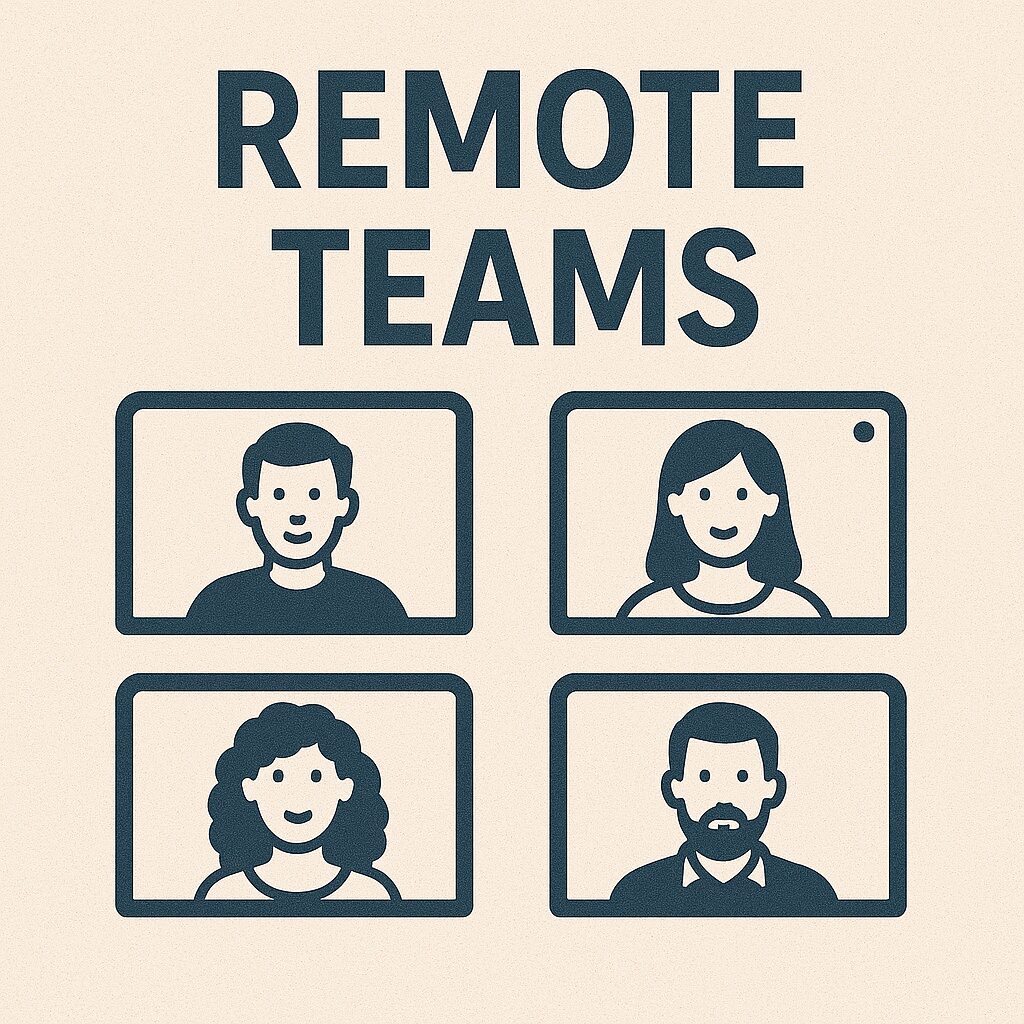Asynchronous Communication: The Secret to High-Performance Remote Teams
Your team has a clear 90-Day Action Plan. You’ve even chosen the right Project Management Method to get it done, whether it’s the structured approach of Waterfall or the adaptive cycles of Agile.
So why does it feel like your entire day is still consumed by back-to-back Zoom calls, constant Slack interruptions, and endless email chains just to keep the project moving?
The problem isn’t your strategy; it’s your communication rhythm. Many businesses, especially those new to remote or hybrid work, fall into the “synchronous trap”—the belief that all important work must happen in real-time, with everyone present.
Market-leading teams operate differently. They master the art of asynchronous communication.
What is Asynchronous Communication?
Asynchronous communication is simple: it’s communication that doesn’t require an immediate response. You send a message, and the recipient responds when they are ready and have had time to give a thoughtful answer.
- Synchronous (The Interruption): Zoom calls, in-person meetings, instant messages.
- Asynchronous (The Contribution): Email, project management comments, recorded video messages, collaborative documents.
The goal isn’t to eliminate synchronous meetings but to make them rare and valuable. You should use them for complex problem-solving and relationship-building, not for simple status updates.
Why Asynchronous Work is a Superpower
Mastering async work isn’t just a preference; it’s a profound competitive advantage.
- It Cultivates Deep Work: Constant interruptions are the enemy of high-value creative and strategic work. An async-first culture gives your team long, uninterrupted blocks of time to do what you actually hired them to do.
- It Improves Decision Quality: When you don’t have to respond instantly, you have time to think. This leads to more thoughtful feedback, better-planned responses, and fewer mistakes made in haste.
- It Creates a Living Record: A conversation in a project management tool is a searchable, permanent record. A verbal decision made in a Zoom call vanishes the moment the call ends.
The Architect’s Toolkit for Asynchronous Success
Building a great async culture requires the right tools. Your goal is to create a “central source of truth” where all project information lives.
1. The Central Work Hub: Your Work OS
This is the foundation. Every project, task, and conversation should live inside a dedicated Work OS. A platform like monday.com is built for this. Instead of asking “What’s the status of this task?” in a Slack message, you simply look at the project board. The status is always visible, updated in real-time for everyone to see.
2. The Collaborative Document Canvas
For strategic documents, project briefs, or proposals, you need a tool that allows for comments and revisions without a live meeting. Instead of emailing versions back and forth, use a collaborative document platform. For formal documents requiring sign-off, a tool like PandaDoc is invaluable, allowing stakeholders to review and approve contracts and proposals on their own time.
3. The Knowledge-Sharing Library
How do you share complex information without a meeting? Record it. A team member can record a short video walkthrough of a new process. You can use a tool like Castmagic to automatically transcribe and summarize audio from a sales call, turning a one-time event into a searchable training asset for the whole team.
4. The Secure Information Vault
“Hey, what’s the password for that account again?” This is a common synchronous interruption that is both inefficient and insecure. A shared password manager is a critical async tool. Using a secure vault like 1Password or Passpack allows your team to access the credentials they need, when they need them, without having to ask you for it.
Your Action Plan: The ‘Async Audit’
Your mission this week is to reclaim your team’s focus.
- Look at your calendar for last week.
- Identify one recurring meeting that was purely for status updates.
- For your next meeting, cancel it.
- Instead, create a shared dashboard in monday.com and ask each team member to post their update as a comment before the original meeting time.
This simple experiment will prove how much can be accomplished without a live call. It’s the first step to breaking the addiction to synchronous communication and building a truly high-performance team.
Need Help Building Your Systems?
Creating an async culture starts with having clear, documented processes. The templates in my free Profit & Pivot Toolkit can help you define your core metrics and strategic goals, giving your team the clarity they need to work autonomously and effectively.
[download_after_email id=”671″]

